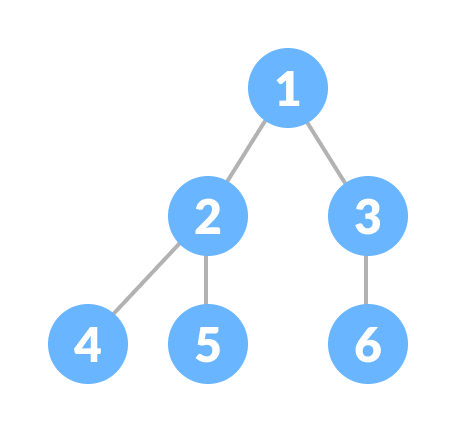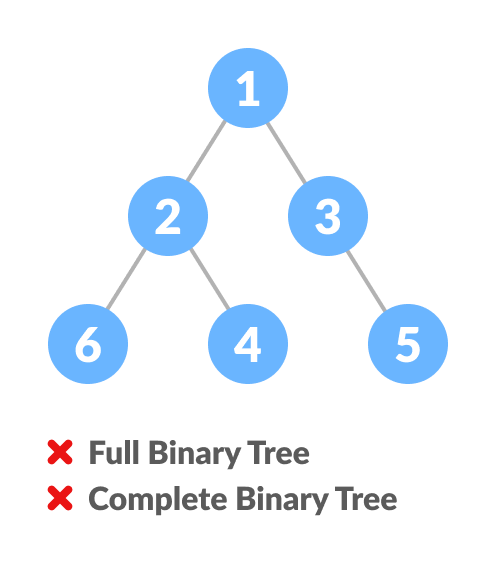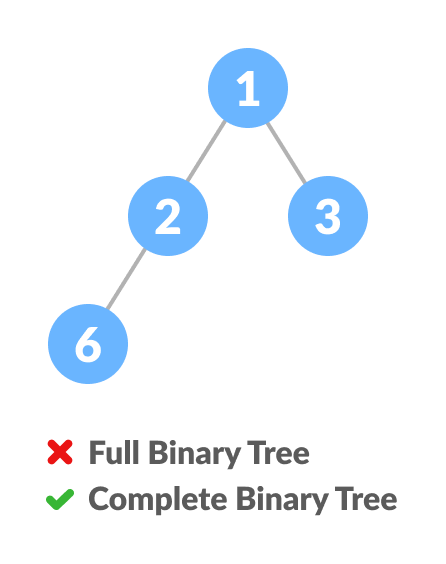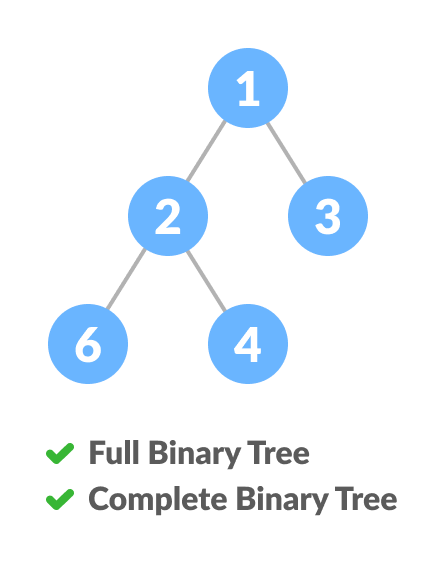draw binary tree from array
Complete Binary Tree
In this tutorial, you will learn about a complete binary tree and its different types. Also, you will find working examples of a complete binary tree in C, C++, Java and Python.
A complete binary tree is a binary tree in which all the levels are completely filled except possibly the lowest one, which is filled from the left.
A complete binary tree is just like a full binary tree, but with two major differences
- All the leaf elements must lean towards the left.
- The last leaf element might not have a right sibling i.e. a complete binary tree doesn't have to be a full binary tree.

Full Binary Tree vs Complete Binary Tree




How a Complete Binary Tree is Created?
- Select the first element of the list to be the root node. (no. of elements on level-I: 1)

Select the first element as root - Put the second element as a left child of the root node and the third element as the right child. (no. of elements on level-II: 2)

12 as a left child and 9 as a right child - Put the next two elements as children of the left node of the second level. Again, put the next two elements as children of the right node of the second level (no. of elements on level-III: 4) elements).
- Keep repeating until you reach the last element.

5 as a left child and 6 as a right child
Python, Java and C/C++ Examples
# Checking if a binary tree is a complete binary tree in C class Node: def __init__(self, item): self.item = item self.left = None self.right = None # Count the number of nodes def count_nodes(root): if root is None: return 0 return (1 + count_nodes(root.left) + count_nodes(root.right)) # Check if the tree is complete binary tree def is_complete(root, index, numberNodes): # Check if the tree is empty if root is None: return True if index >= numberNodes: return False return (is_complete(root.left, 2 * index + 1, numberNodes) and is_complete(root.right, 2 * index + 2, numberNodes)) root = Node(1) root.left = Node(2) root.right = Node(3) root.left.left = Node(4) root.left.right = Node(5) root.right.left = Node(6) node_count = count_nodes(root) index = 0 if is_complete(root, index, node_count): print("The tree is a complete binary tree") else: print("The tree is not a complete binary tree") // Checking if a binary tree is a complete binary tree in Java // Node creation class Node { int data; Node left, right; Node(int item) { data = item; left = right = null; } } class BinaryTree { Node root; // Count the number of nodes int countNumNodes(Node root) { if (root == null) return (0); return (1 + countNumNodes(root.left) + countNumNodes(root.right)); } // Check for complete binary tree boolean checkComplete(Node root, int index, int numberNodes) { // Check if the tree is empty if (root == null) return true; if (index >= numberNodes) return false; return (checkComplete(root.left, 2 * index + 1, numberNodes) && checkComplete(root.right, 2 * index + 2, numberNodes)); } public static void main(String args[]) { BinaryTree tree = new BinaryTree(); tree.root = new Node(1); tree.root.left = new Node(2); tree.root.right = new Node(3); tree.root.left.right = new Node(5); tree.root.left.left = new Node(4); tree.root.right.left = new Node(6); int node_count = tree.countNumNodes(tree.root); int index = 0; if (tree.checkComplete(tree.root, index, node_count)) System.out.println("The tree is a complete binary tree"); else System.out.println("The tree is not a complete binary tree"); } } // Checking if a binary tree is a complete binary tree in C #include <stdbool.h> #include <stdio.h> #include <stdlib.h> struct Node { int key; struct Node *left, *right; }; // Node creation struct Node *newNode(char k) { struct Node *node = (struct Node *)malloc(sizeof(struct Node)); node->key = k; node->right = node->left = NULL; return node; } // Count the number of nodes int countNumNodes(struct Node *root) { if (root == NULL) return (0); return (1 + countNumNodes(root->left) + countNumNodes(root->right)); } // Check if the tree is a complete binary tree bool checkComplete(struct Node *root, int index, int numberNodes) { // Check if the tree is complete if (root == NULL) return true; if (index >= numberNodes) return false; return (checkComplete(root->left, 2 * index + 1, numberNodes) && checkComplete(root->right, 2 * index + 2, numberNodes)); } int main() { struct Node *root = NULL; root = newNode(1); root->left = newNode(2); root->right = newNode(3); root->left->left = newNode(4); root->left->right = newNode(5); root->right->left = newNode(6); int node_count = countNumNodes(root); int index = 0; if (checkComplete(root, index, node_count)) printf("The tree is a complete binary tree\n"); else printf("The tree is not a complete binary tree\n"); } // Checking if a binary tree is a complete binary tree in C++ #include <iostream> using namespace std; struct Node { int key; struct Node *left, *right; }; // Create node struct Node *newNode(char k) { struct Node *node = (struct Node *)malloc(sizeof(struct Node)); node->key = k; node->right = node->left = NULL; return node; } // Count the number of nodes int countNumNodes(struct Node *root) { if (root == NULL) return (0); return (1 + countNumNodes(root->left) + countNumNodes(root->right)); } // Check if the tree is a complete binary tree bool checkComplete(struct Node *root, int index, int numberNodes) { // Check if the tree is empty if (root == NULL) return true; if (index >= numberNodes) return false; return (checkComplete(root->left, 2 * index + 1, numberNodes) && checkComplete(root->right, 2 * index + 2, numberNodes)); } int main() { struct Node *root = NULL; root = newNode(1); root->left = newNode(2); root->right = newNode(3); root->left->left = newNode(4); root->left->right = newNode(5); root->right->left = newNode(6); int node_count = countNumNodes(root); int index = 0; if (checkComplete(root, index, node_count)) cout << "The tree is a complete binary tree\n"; else cout << "The tree is not a complete binary tree\n"; } Relationship between array indexes and tree element
A complete binary tree has an interesting property that we can use to find the children and parents of any node.
If the index of any element in the array is i, the element in the index 2i+1 will become the left child and element in 2i+2 index will become the right child. Also, the parent of any element at index i is given by the lower bound of (i-1)/2.
Let's test it out,
Left child of 1 (index 0) = element in (2*0+1) index = element in 1 index = 12 Right child of 1 = element in (2*0+2) index = element in 2 index = 9 Similarly, Left child of 12 (index 1) = element in (2*1+1) index = element in 3 index = 5 Right child of 12 = element in (2*1+2) index = element in 4 index = 6
Let us also confirm that the rules hold for finding parent of any node
Parent of 9 (position 2) = (2-1)/2 = ½ = 0.5 ~ 0 index = 1 Parent of 12 (position 1) = (1-1)/2 = 0 index = 1
Understanding this mapping of array indexes to tree positions is critical to understanding how the Heap Data Structure works and how it is used to implement Heap Sort.
Complete Binary Tree Applications
- Heap-based data structures
- Heap sort
dickinsontorty1961.blogspot.com
Source: https://www.programiz.com/dsa/complete-binary-tree
0 Response to "draw binary tree from array"
Post a Comment